Critical Mass
How the 24/7 Movement is Poised to Make a Massive Impact on the Last Remaining Unreached People Groups

“In 1984, the number of 24/7 houses of prayer in the world was fewer than twenty-five. Today there are over ten thousand—and most of that growth has been in the last ten years; they are springing up all over the globe at a staggering rate.”1 This is a unique phenomenon that is unprecedented in history. There is a critical mass forming.
These houses of prayer often act as missional “sodalities.” This means they are second-decision communities that serve in a role outside of the local church like other specialized non-profit ministries. Others see themselves as expressions of a type of local missional church, with a 24/7 prayer culture built into its core.
Many who embrace the full-time occupation of “intercessory missionary” are called to commit to fifty hours of service per week, including being in prayer for at least four hours a day, six days a week. Those working through this paradigm also emphasize three main dimensions of missions work: continual prayer, deeds of mercy, and sharing the gospel. They believe that all three must go together and that “prayer is the greater work.” The vast majority of these houses of prayer reject any form of cloistered spirituality that separates them from the needs of the world. They believe in turning prayer into practical action.
Some point out that the model has not yet had strong exposure to the broader world of missions and missiology, especially as it relates to frontier missions. In distinction they are said to have an emphasis on prayer for Israel, many times to the exclusion of other ethnic groups. Critics are quick to point out that the term “intercessory missionary” is not in the Bible, but proponents are also quick to point out that the Bible doesn’t give a comprehensive list of ministries that the Spirit has used to meet the specific needs of various cultures in the different generations throughout church history. For instance, in the Bible we do not see the title or a detailed job description of a senior pastor, youth pastor, missionary, marriage counselor, minister to the poor or to children, but we do see one for apostle.
Below are a couple of examples that are given when proponents speak about the background and basis of this kind of ministry.
The Anna Calling
Those who serve as intercessory missionaries cite Anna in the New Testament as an example. Though many would not claim to live as consecrated a life in prayer, Anna is still a model that some hold in high regard.
“Now there was one, Anna, a prophetess.... She was of a great age, and had lived with a husband seven years from her virginity; and this woman was a widow of about eighty-four years, who did not depart from the temple, but served God with fasting and prayers night and day... she gave thanks to the Lord, and spoke of [Jesus] to all those who looked for redemption in Jerusalem.” (Luk 2:36–38, NKJV)
Anna is seen as a prophetess (v. 36), intercessor (v. 37), and evangelist (v. 38). She is said to represent those who have the grace to sustain long hours of prayer over the course of many years.
Day and Night, Night and Day
Luke 18 is another key scripture for those who are ministering in the prayer movement.
 “Shall not God bring about justice for His elect, who cry to Him day and night? He will bring about justice for them.…However, when the Son of Man comes, will He find faith on the earth?” (Luk 18:7–8, NASB)
“Shall not God bring about justice for His elect, who cry to Him day and night? He will bring about justice for them.…However, when the Son of Man comes, will He find faith on the earth?” (Luk 18:7–8, NASB)
The verses immediately preceding this passage are in the context of the end of days when the Son of Man, Jesus Christ, will return. Many who serve as intercessory missionaries live with a kind of eschatological urgency that ties ongoing prayer and intercession with the return of the Lord and his release of justice to the earth.
J. Philip Hogan, former missionary to China and Executive Director of the Assemblies of God from 1960-1990, said, “We believe you cannot separate missiology and eschatology; they belong together. The end of this function is to bring Jesus back, we believe, and those are our goals.”2 This is also the belief and goal of many serving in these prayer movements.
Davidic Worship
King David was said to be the first to create a full time occupation of singers who ministered to God night and day. David commanded all the kings after him to uphold the order of worship that he received from God, because it was God’s command (2 Chr 29:25; 35:4, 15; Ezr 3:10; Neh 12:45). In Psalm 132 king David is said to have made a vow to God to find a “resting place” for God.
Many in the prayer movement interpret this verse in distinction to Genesis 6 where it speaks of God’s spirit not always “striving with man.” The resting place then is said to be the place where the Spirit of God “rests” in the midst of his people who seek to live in agreement with his will rather than striving with them in order to convince them to obey. It is one of the aims of the culture of prayer to provide a resting place for God, both as individuals and as a corporate community.
Monastic Communities
Throughout church history examples have been cited as precedents for night and day prayer and worship: Alexander Akimetes and the order of the Acoemetae—literally “the sleepless ones;” Comgall and the Bangor Ireland monastery that combined both prayer and missions work; Abbot Ambrosius who planted monasteries that continued night and day in prayer for over 400 years; the monastery in Cluny France, Bernard of Clairvaux, and most famously, to many in the Protestant missions movement, the Moravians.
The Moravians
The Moravians lived by Leviticus 6:13, “The fire must be kept burning; it must not go out.” The prayer meeting they began with their little band of persecuted followers continued non-stop for 100 years. Out of this movement over 200 missionaries were sent around the world during a time when the rest of the Protestant world had virtually no missionary outreach at all. Their influence was even instrumental in the life and ministry of John Wesley, a contemporary of Jonathan Edwards and the founder of the Methodists.
Houses of Prayer Today
Night and day or “24/7” houses of prayer have emerged in places such as Kiev, Bogota, Jerusalem, New Zealand, Cape Town, and Hong Kong, among many others. Despite the obvious challenges, 24/7 prayer centers are also emerging in nations like Egypt, Turkey, Syria, Indonesia, and Lebanon.
 Leaders in these prayer movements do not believe that it is God’s will for every local church or ministry to host 24/7 worship in their own building, but rather that He plans to establish it in each gateway center or city of the earth. They believe that this can happen if many local churches partner together in the work of night-and-day prayer rather than the house of prayer groups acting alone. Many of those seeking to establish houses of prayer see their role as catalytic in nature. They understand that practical applications may differ from city to city and from nation to nation, as well as from culture to culture.
Leaders in these prayer movements do not believe that it is God’s will for every local church or ministry to host 24/7 worship in their own building, but rather that He plans to establish it in each gateway center or city of the earth. They believe that this can happen if many local churches partner together in the work of night-and-day prayer rather than the house of prayer groups acting alone. Many of those seeking to establish houses of prayer see their role as catalytic in nature. They understand that practical applications may differ from city to city and from nation to nation, as well as from culture to culture.
The culture of the house of prayer emphasizes what they call the “first commandment established in the first place.” Mike Bickle, leader of the International House of Prayer in Kansas City (IHOPKC), says “Jesus defined loving God as being deeply rooted in a spirit of obedience in John 14:21. There is no such thing as loving God without seeking to obey his Word.”3 Daniel Lim, the CEO of IHOPKC, says that a common saying around their ministry is, “When you talk to the One who gave the Great Commission—day and night, night and day—you can’t help but be infected with missionary passion.” It is this kind of connection of loving obedience with the Great Commandment and the Great Commission that gives the prayer movement great potential for global impact.
Pete Grieg of the Boiler Room Movement out of the UK remarks, “In my experience the people who do the praying are infectious. They are full of the presence of God. They are exactly the people you want to get out among the lost. And often the people who are out here doing mission, if they are not praying, they’re burning out. And they’re the ones who are talking about the good news but they look the least like the good news. They’re the ones who need to go and get in the presence of God.”4
ACTS 13
One of the people who have led the way in the mash up between the new prayer culture and the frontier missions vision is Brian Kim of the Antioch Center for Training & Sending, also known as The ACTS School. Brian had his start at the IHOPKC base and has recently moved the ministry to the offices of Every Home For Christ in Colorado Springs, CO. When we spoke recently Brian said, “Missionaries have always been some of the most prayerful people I’ve met. But from a macro level, what we are beginning to see is movements recognizing that we have to link arms together.” This is the convergence that has been happening in recent history.
The ACTS School model is based on Acts 13:1-3,
Now in the church that was at Antioch there were certain prophets and teachers: Barnabas, Simeon who was called Niger, Lucius of Cyrene, Manaen who had been brought up with Herod the tetrarch, and Saul. As they ministered to the Lord and fasted, the Holy Spirit said, “Now separate to Me Barnabas and Saul for the work to which I have called them.” Then, having fasted and prayed, and laid hands on them, they sent them away. (NKJV)
Here we find a multi-cultural sending team with both prophets and teachers who were ministering to the Lord. They first had a God-ward gaze and out of this worship came forth mission. To those in the prayer movement, prayer is not simply about getting something done, it is about connecting with a real person, who also happens to be the Lord of the harvest (Mat 9:38, Luk 10:2). Prayer is both a means and an end. It unleashes Gospel movements and it is what worshipers do. Kim quotes one of his favorite authors, John Piper, when he famously said, “Missions exists because worship doesn’t.”
Harp & Bowl
When it comes to some of the elements that are a regular part of house of prayer worship, the term “harp and bowl” comes up often. It is taken from Revelations 5:8, which says,
And when he had taken it, the four living creatures and the twenty-four elders fell down before the Lamb. Each one had a harp and they were holding golden bowls full of incense, which are the prayers of God’s people. (NKJV)
In this verse, leaders in the movement see a model of worship that includes both music and the prayers of God’s people mingled. Kim says that the house of prayer has been called by some a “singing seminary,” where you learn the Scripture as you sing the Scripture. The desire to make worshipers out of the nations is something that is fundamental to this paradigm of missions. Scriptures such as Ephesians 5:18-19 and Colossians 3:16 are used to demonstrate the belief that being filled with the Spirit is most evidenced by whether or not a person is sharing Jesus with others and telling the story of God (Acts 1:8,9) more than in any other single piece of evidence. It is also evidenced by the heart’s response to God in singing with gratitude.
Navigating Culture and Partnership
When I asked how this type of model goes over in places like Eurasia and among Muslim background people, Kim says, “People come in and gravitate to it. They are mesmerized by it. They see both liberty, reverence, and joy. It’s attractive.” The team at the Antioch Center desire for local believers to sing in their own heart language about their own experiences in God. He says, “Western music is not the highest ideal. Sometimes it may look radically different in another culture. God wants to redeem both peoples and culture.”
As we talked more about the question of “what the role of Westerners in global mission is?” We both agreed with missions specialist Paul Borthwick that “it depends.” In his book Western Christians in Global Mission: What’s The Role of the North American Church? Borthwick publishes two mock letters written by Bob Blincoe of the mission agency Frontiers. Each letter is a fictional representation of real encounters used to illustrate the challenges of partnership between North Americans and majority world Christians.4 The content illustrates the tension that is faced when trying to partner local leadership and pioneering ministries with unreached ethnic groups. Kim has also felt the tension as his teams on the field try to navigate the same challenges.
Prayer and Mission Leaders Gather
These growing prayer movements continue to reach out to the larger evangelical community as they grow into their second decade of existence. This past December, IHOPKC held its first annual OneThing Leadership Summit in conjunction with their annual OneThing conference, which drew over 30,000 people from all over the world. The leadership summit’s “by invitation only” gathering of 500 prayer and mission leaders was an unprecedented meeting and the beginning of a new conversation and collaboration between the prayer and frontier missions movements.
The goals of the 2013 summit were:
To strengthen relationships between key leaders from the prayer and missions movements as well as key local church pastors who have a value for both.
To begin the discussion of strategic goals and objectives, to see night and day prayer established in every language and in each geographic and ethnic region of the earth.
To explore the diversity of expression in corporate prayer with worship.
The meeting delegates were able to immediately act on their vision by adopting 300 language groups that are still in need of Bible translation in their heart language. The leaders present took up the challenge, adopted the people groups, and agreed to ongoing prayer over the next year for these projects.
In addition, IHOPKC, in partnership with The Seed Company, a subsidiary of Wycliffe Bible Translators, took responsibility for the funding of five Bible translation and Jesus film projects to the tune of $250,000. IHOP leader Mike Bickle told then Seed Company CEO, Roy Peterson, that he looked forward to raising the funds and adopting more Bible translation projects next year. He emphasized how prayer and the Word of God were essential for every tribe and language to worship God. The goal of The Seed Company is to help eradicate one of the greatest injustices of our day: Bible poverty.
Those attending the leadership summit included leaders like Roy Peterson of The Seed Company, John Dawson of YWAM, Mark Anderson of Call2All, Francis Chan who was also a keynote speaker, Lou Engle of The Call and Ekballo House of Prayer, Andy Byrd of Fire & Fragrance and The Circuit Riders, and other global leaders. In addition, the leadership team of IHOP (which included Mike Bickle, Daniel Lim, Wes Hall, and Allen Hood) was active in leading the forum and discussions.
The format of the summit included prayer, worship, exhortation from leaders, round table discussion, panel discussions, and one-on-one meetings. The meetings contained relational, strategic, and tactical elements with leaders gathered on the first day around their ministry affinities and on the second day around their geographic locations. The leadership plans to gather again this year.
Prayer > Revival > Mission
Let me leave you with a classic quote from a 1979 article in Mission Frontiers:
“The Christian faith has known a number of great revivals, waves of the Spirit of God which ripple across history. Dr. J. Edwin Orr of Fuller Seminary has studied these movements. He discovered no revival occurs without an initial wave of prayer. The world’s greatest mission movements have historically sprung from the soil of revival. To reach the 2.5 billion people who yet remain without the Good News, we must pray, we must sow seeds in prayer which will ultimately bear fruit in action. Frontiers still forbidding will be penetrated as we assault them with our prayers. People will be reached for God as we reach God in prayer.”5
Time will only tell if the global 24/7 prayer movement will begin to consistently focus its prayers, resources, and sending on the frontiers of God’s global mission, the last remaining unreached and unengaged people groups. But if I had to make a bet, I would bet that the time has come. I see a critical mass ready to take up the challenge for the glory of God.
Learn more by visiting:
ihopkc.org, 24-7prayer.com, actsschool.com, theseedcompany.org.
Profile of The International House of Prayer Kansas City
- The IHOPKC has been maintaining unceasing 24/7 prayer for 14 years.
- There are 84 2-hour prayer sets maintained each week.
- The IHOPKC base receives over 100,000 visitors a year.
- The base houses 700 students and staff.
- IHOP University and Bible School enrolls 1,000 students.
- The OneThing Internship drew 610 interns in 2013.
- Those who serve in prayer, worship, and service through IHOPKC are called intercessory missionaries.
- Intercessory Prayer Missionaries spend a minimum of 25 hours a week in prayer and worship. They spend another 25 hours a week in compassion, evangelism, and service.
- IHOPKC is run by 1,000 staff missionaries. They were inspired in the early days by YWAM and Cru and therefore all staff members raise support.
- 9 Languages are served with full worship teams each week.
-
50 missionaries are currently deployed to “creative
access countries.” - 12.7 million people visited the ihopkc.org web site in 2013 alone.
- 10,000 gigabytes of teaching and worship resources are available online for free.
- 8,700 hours of live web streaming were displayed in 2013.
- IHOPKC holds 10 conferences a year including the OneThing conference.
- 35 artists have recorded on the Forerunner music label with 150 albums produced.


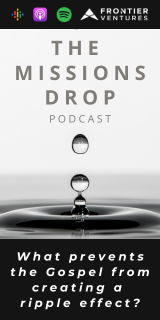
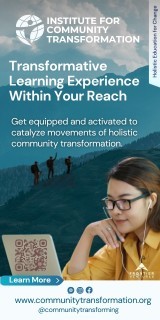

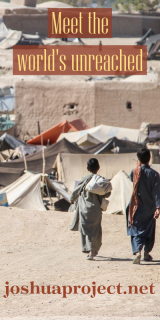
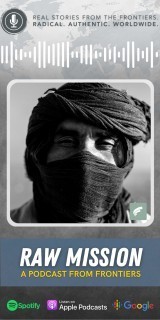
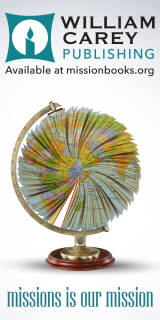
comments